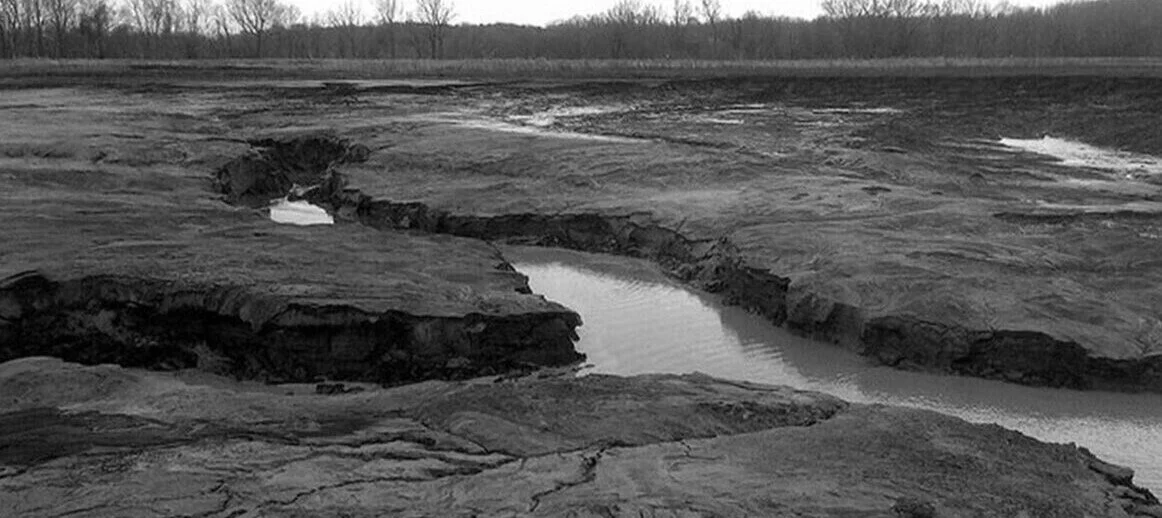Coal Ash Management: A National Industrial Challenge
Coal ash—also known as coal combustion residuals (CCR)—is one of the largest industrial waste streams in the United States. Generated from coal-fired power plants, steel mills, cement kilns, and paper mills, coal ash contains a mixture of fine and coarse particulate matter including:
Fly Ash – fine silica-rich powder
Bottom Ash – coarse furnace by-product
Boiler Slag – molten ash that solidifies into glassy pellets
Flue Gas Desulfurization (FGD) Material – sulfite/sulfate sludge or powder from emissions controls
Many of these materials contain heavy metals such as arsenic, lead, mercury, and cadmium—elements that pose serious risks to communities, water sources, and ecosystems when not properly managed.
For decades, the United States has lacked a comprehensive, scalable, and economically feasible solution to address this growing challenge. This gap has resulted in billions of tons of accumulated waste and mounting risks to public health and infrastructure.
GCS Fibers directly addresses this national crisis.
The Scope of the Problem: Billions of Tons of Unmanaged Coal Ash
Across the United States, more than:
3 billion tons of coal ash are stored in landfills and ash ponds
100 million additional tons are generated each year
Hundreds of disposal sites sit adjacent to rivers, aquifers, and communities
When coal ash is placed into unlined ponds or landfills, heavy metals can leach into groundwater—impacting drinking water for millions of Americans, disproportionately burdening low-income communities.
EPA reports show that while some coal ash is “beneficially reused” (e.g., road base, concrete additives, mine fill), excluding these uses, only about 20% is truly recycled, leaving the overwhelming majority in long-term storage sites.
Traditional “Management” Approaches Have Failed
1. Capping in Place
Many utilities have chosen to “cap” ash ponds by covering them with soil and vegetation.
However:
Contaminants continue to leach into groundwater
Leaks remain undetected for years
Local communities—often rural, minority, or economically distressed—bear the health impacts
2. Relocation to New Landfills
Some utilities transport coal ash across state lines, moving the burden from one community to another.
This option:
Is extremely expensive
Increases environmental challenges
Increases ratepayer costs
Fails to eliminate long-term risk
3. Limited “Beneficial Use”
Conventional reuse markets can absorb only a small fraction of U.S. coal ash.
They cannot safely or economically handle billions of tons.
4. The Emerging Rare Earth Element (REE) Sector
GCS transforms the leftover ash from rare earth element extraction into high-value U.S. industrial materials, enabling a zero-waste critical mineral supply chain.
GCS partnerships with REE extraction teams prevent new disposal sites from forming.
National Incidents Underscore the Urgency
Major coal ash failures have resulted in catastrophic environmental damage:
Kingston, TN (2008) – 1.1 billion gallons of coal ash slurry released
Dan River, NC (2014) – tens of thousands of tons spilled into waterways
Little Blue Run, PA – the largest coal ash lake in the U.S., leaking for decades
Possum Point, VA – emergency cleanup action following groundwater contamination
These are just a few examples demonstrating that coal ash is not a localized issue—it is a widespread national challenge affecting several states and hundreds of communities.
A National Crisis Meets a National Opportunity
As the U.S. moves to rebuild domestic manufacturing capacity, strengthen supply-chain resilience, and restore economic vitality—particularly in rural and transitioning coal communities—the country requires new sources of raw materials that do not strain forests, ecosystems, or foreign supply chains.
Coal ash represents one of the largest untapped industrial feedstocks in the country.
Instead of a liability, it can become an asset.
Instead of a burden, it can become a resource.
Instead of a public-health threat, it can become a foundation for American manufacturing.
How GCS Fibers Changes the Equation
GCS Fibers’ coal-ash-to-mineral-fiber technology provides the first scalable, commercially viable pathway to:
Permanently remove coal ash from ponds and landfills
Neutralize toxic metals within a stable mineral matrix
Transform coal ash into six high-value mineral fibers
Supply domestic manufacturers with U.S.-produced materials
Reduce reliance on foreign fiber imports
Reclaim land for utilities and communities
Revitalize local economies
Support U.S. national security and supply-chain resilience
Each GCS Fibers factory is capable of repurposing hundreds of thousands of tons per year, turning a legacy environmental hazard into a feedstock for:
Composites
Textiles
Automotive friction materials
Insulation
Packaging
Carbon-fiber precursor materials used in defense and aerospace
GCS Fibers’ factories directly advance U.S. goals for:
Materials manufacturing
Coal community revitalization
National security and domestic supply chain stability
Responsible management of legacy infrastructure
The Price of Inaction Is High
EPA estimates show that ash pond remediation can cost $80–$120 per ton.
With 3 billion+ tons currently stored, the nation faces a hundreds-of-billions-of-dollars challenge—costs that ultimately fall on:
Utilities
Ratepayers
Taxpayers
Impacted communities
Without an economic alternative, utilities often delay cleanup or pursue approaches that do not eliminate long-term risks.
GCS Fiber’s solution turns an environmental liability into a manufacturing opportunity—changing the economics of remediation and enabling true cleanup at scale.
The Path Forward
GCS Fibers Coal-Ash-to-Mineral-Fiber Technology presents one of America’s most promising opportunities for:
Job creation
Advanced manufacturing growth
Domestic supply chain independence
Community revitalization
Reduction of foreign mineral dependencies
Strengthening of national security
GCS Fibers stands ready to support DOE, EPA, state governments, utilities, and communities in meeting the Coal Ash challenge—permanently, sustainably, and in a way that strengthens the nation’s economic and industrial future.



